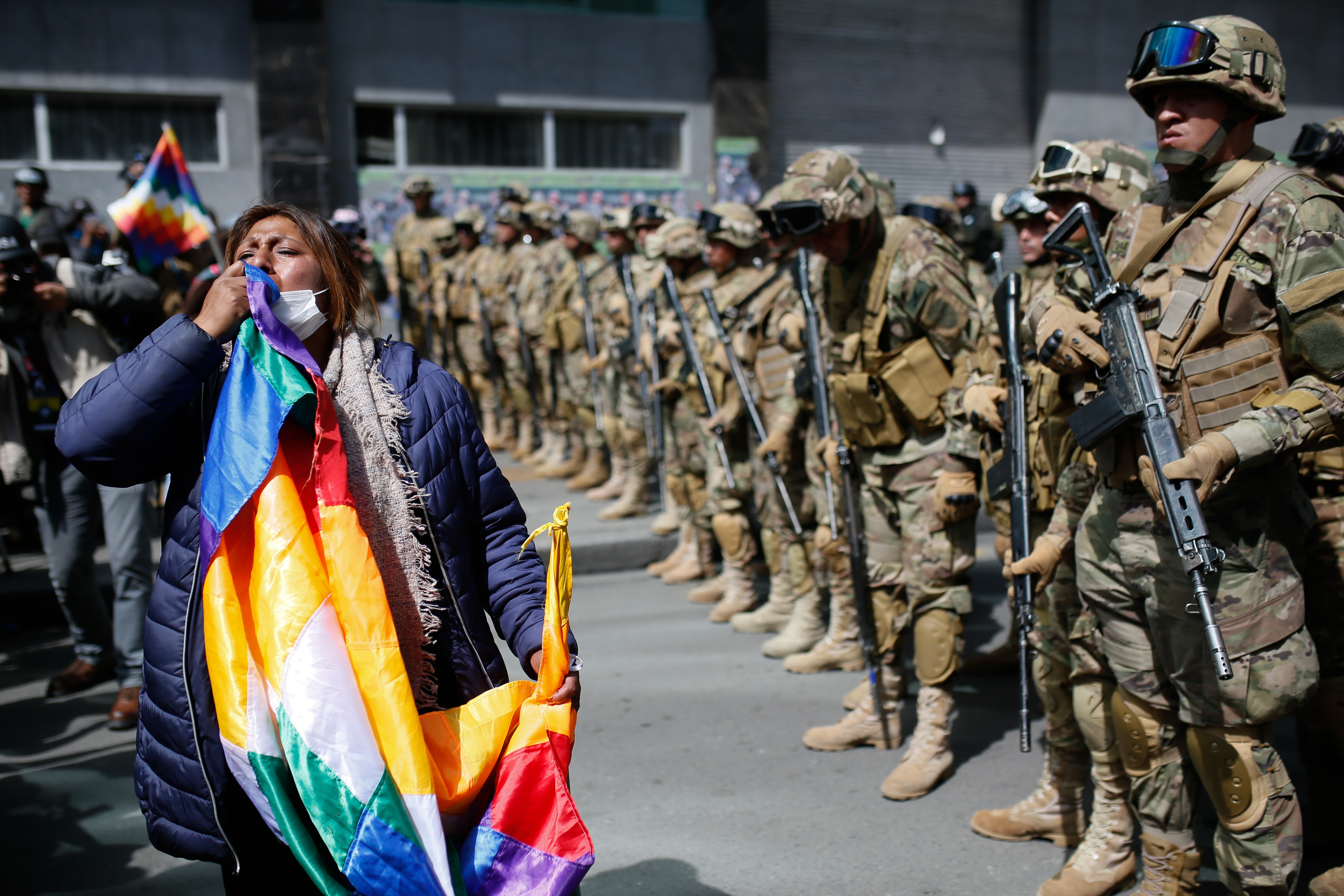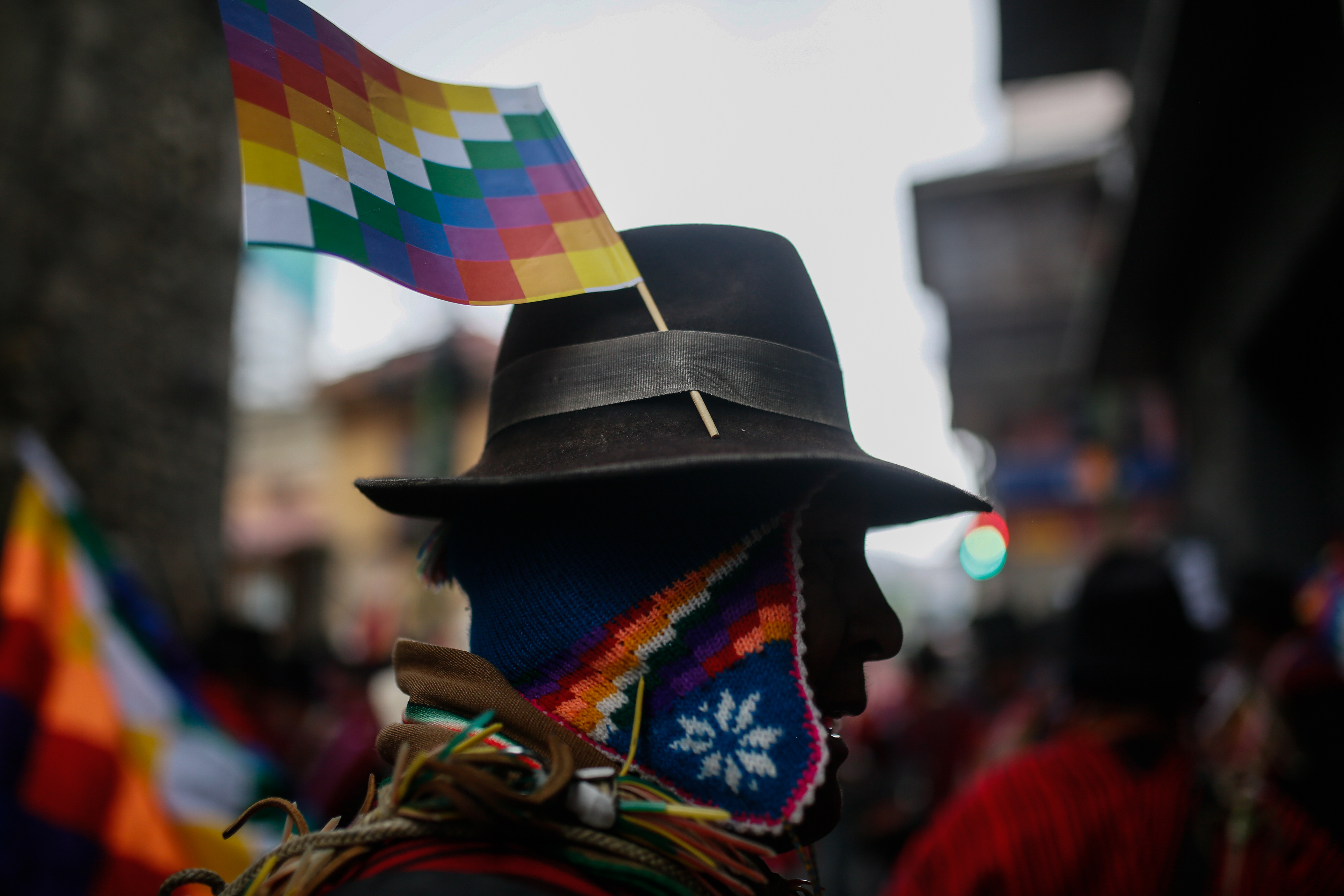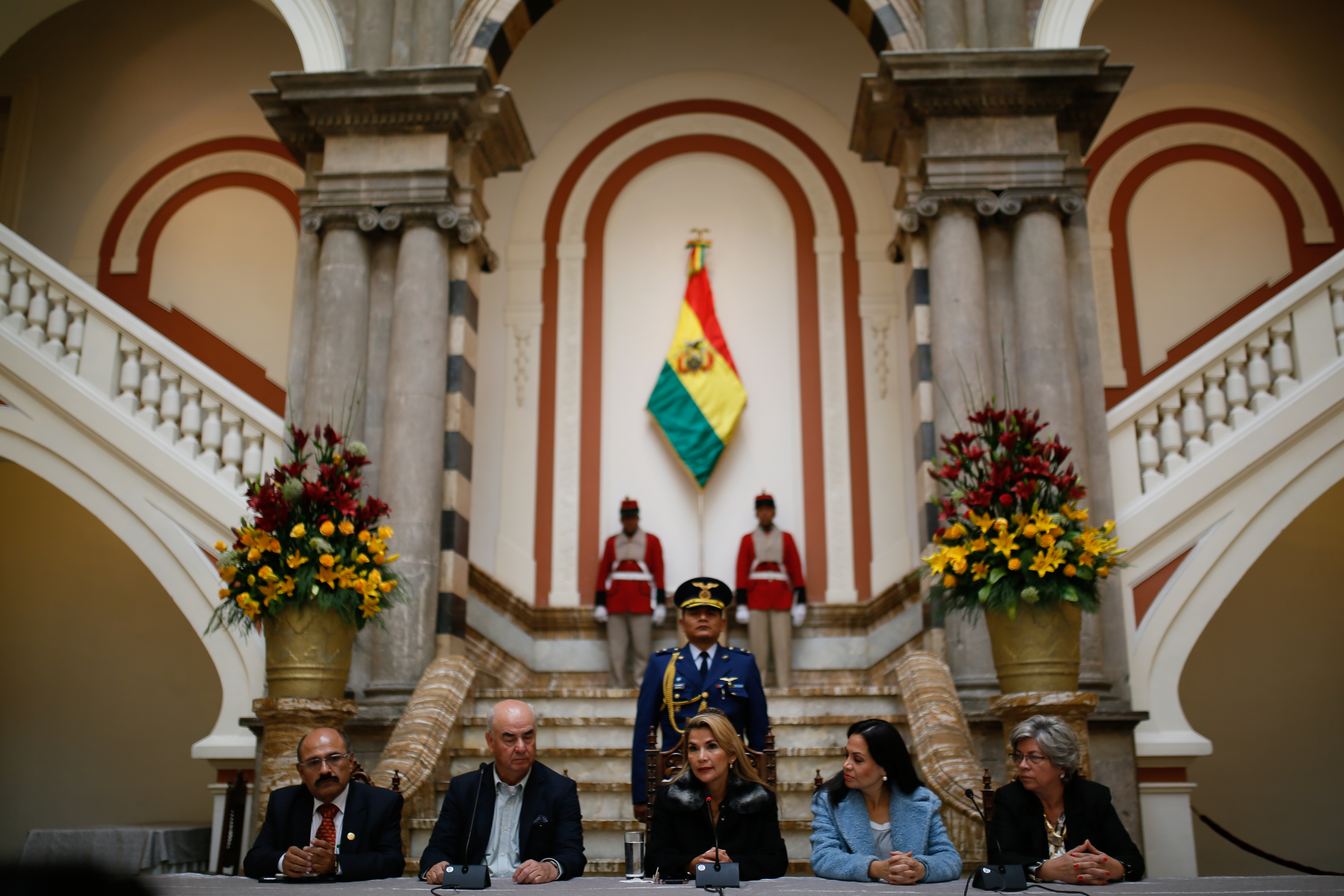“They made us believe that there were two Bolivias,” commander of the South American country’s Santa Cruz police force, Miguel Mercado, shared last week on live television, almost in tears. “We have always believed that Bolivia is one, that the red, yellow and green [flag] is the one that shelters us all.” His words, along with the violent protests gripping the nation, highlight a social clash that’s represented through Bolivia’s most popular flags.
“The Wiphala represents the Indigenous resistance. The Indigenous fight has never ceased.”
The country’s police uniforms have patches on the left sleeve with the tricolor national flag, adopted in 1851, and the Wiphala flag, an emblem of the Indigenous people of the Andes region, which was made a national symbol in the 2009 constitution, stitched side by side. Where one flag flies, the other is expected to be waving next to it as well. But as protests shake the country, the markers of pride have come to represent division.
Since former President Evo Morales, the country’s first Indigenous leader, resigned this month following massive protests and criticisms of electoral fraud, both flags have become prominent and polarizing elements. Videos have circulated across social media showing mutinied police officers cutting off the Wiphala patch from their uniforms and burning the flag. In response, Morales’ supporters in El Alto of La Paz have taken to the streets chanting, “The Wiphala is to be respected. The Wiphala is the pueblo,” and burning the tricolor national flag as well as the ensign of Santa Cruz, an opposition stronghold in the eastern part of the country.
“[For Morales’ supporters], the Wiphala represents the Indigenous resistance. The Indigenous fight has never ceased,” Bolivian philosopher and writer Rafael Baustista tells Remezcla. According to him, the rejection of the Wiphala, and the deep division found among Bolivians, can be traced back to the history on which the country was founded.

Following Spanish conquest, a time of violence and oppression toward the Indigenous people, Bolivian independence concluded in a complex and flawed process driven by the personal ambitions of Bolivian criollo elites. It failed to establish internal cohesion and a national identity in the face of significant ethnic and geographic diversity. Even more, extreme conditions of Bolivia’s mountainous terrain led to poor interregional communication, creating a sense of regional rather than national identity among both isolated Indigenous peoples and mestizo city-dwellers — a separative regional identity that has never been repaired.
The origin of the Wiphala is a mystery. Carved vessels were found with the squares of the flag in the city of Tiwanaku, an archaeological site just west of La Paz, that dates back to the year 200 B.C. However, the Wiphala as a flag came on the scene in the 1970s, during the campesino movement that was organized to recover the political identity of the Aymara people.
Journalist and documentarian Mario Espinoza Osorio shares that the current events following the resignation of the former president represent a “wave of revenge.” For him, the identity division has escalated, resembling “fascist features in which the east and the highlands are assumed as distinct, each claiming that it is culturally superior.”
Complicating the split even more, Bautista says, is that many Bolivians who are among the opposition are also Indigenous.
“If you want to be admitted into high urban society, you have to deny yourself, you have to disregard the Indigenous that you have,” he says. “When they see the Wiphala, they see a symbol of what they no longer want to be.”

Nonetheless, Morales’ political party, Movimiento al Socialismo (MAS), has been criticized for using the flag too politically. Rafael Quispe, a congressional representative and Indigenous opposition leader said, “The Wiphala is not from a [political] party. The Wiphala is from the pueblo.”
“When they see the Wiphala, they see a symbol of what they no longer want to be.”
Miguel Chavez Cohelo, a member of an opposition group in the department of Beni, located in the eastern lowlands, tells Remezcla that “the government party MAS, during its 14 years, used [the Wiphala] to try and separate us, divide us, make us believe there were two Bolivias, for a political purpose.”
He says that the opposition in the city of Santa Cruz protested with three flags: the national flag, the Wiphala and the white flag with the flower patuju on it, the ensign of the Indigenous people of the eastern lowlands of Bolivia.
“We live in a diverse and plurinational country where all of our ideas, ethnicities, customs and patriotic symbols need to be respected,” he says.
In his dissent of Morales, Cohelo assisted opposition protest leader Luis Fernando Camacho, who walked through the halls of the palace and kneeled on the Bolivian national flag with a Bible in hand. They wanted to “bring the Bible back to the palace of the government.” When Morales’ administration approved a new constitution in 2009, it turned Bolivia from an officially Catholic nation, where officials swore oath on a Bible, to a secular state. The decision was made with the effort to prevent discrimination against the beliefs of Bolivia’s Indigenous cultures.

“We must learn to live together once again. We have no other option.”
His dissenters, including interim President Jeanine Añez, claim that a “new Bolivia” is forming. The transitional cabinet, initially sworn into office Wednesday night, did not include a single Indigenous person, increasing polarization, though there is now some Indigenous representation.
Since the heightened unrest, Añez has changed her tune, saying, “It’s important to preserve our cultural practices of our Bolivian people, because they enrich the national identity.”
As the country awaits news of another presidential election date and Morales remains in political asylum in Mexico, the Wiphala flag continues to fly in the government palace.
But the symbols continue to amplify political divide in Bolivia, a grand example of historical oppression that goes unaddressed and, as a result, becomes expressed on the political stage. It highlights the level of reparations and acknowledgement necessary to decolonize a nation and navigate a season of repair.
“Either way, we are divided. We must learn to live together once again. We have no other option,” Espinoza says.







